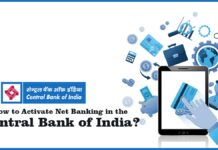Mudra Loan is a great way for a small vendor to finance your business. It is a loan scheme launched by the Government of India for the MSME business to provide financial requirements.
If you are establishing a new business or wanted to expand the business for growth, you can apply for this loan.
You can apply for a Mudra loan in various banks including Government Banks in India. One such bank is the Central Bank of India.
In this article, we will discuss how to apply for Mudra Loan in the Central Bank of India, Documents Required, types of Mudra loans, etc.

Table of Contents
Types of Mudra Loans
The following are the three types of Mudra Loan that you can apply for in the Central Bank of India-
| Types | Loan Amount |
| Shishu | Rs.50,000/- |
| Kishor | Rs.50,000/- to Rs.5,00,000/- |
| Tarun | Rs.5,00,000/- to Rs.10,00,000/- |
Eligibility for Mudra Loan
The following are the eligibility criteria that you have to meet to apply for a Mudra Loan in the Central Bank of India–
- The applicant must be in between 18 years of age to 65 years of age
- A new Startup or an existing establishment can apply for the loan
How to Apply for Mudra Loan in Central Bank of India?
You can follow these steps to apply for Mudra Loan in the Central Bank of India–
- Visit the nearest Central Bank of India or download the Mudra Loan application form from the official website of the Central Bank of India
- Now, fill the form with details like name, address, loan purpose, amount, PAN card details, etc.
- After filling out the form, attach all the documents mentioned below to the bank representative
- The bank representative will check your documents and application form and further forwards your request to the loan department of the bank
- Now, your application will be processed and you can be questioned related to the loan and bank officials can visit your home or office for review
- Now, based on the internal methodology by the bank your loan application will be approved or rejected
- You’ll be notified if your loan has been approved and the loan amount will be debited to your account
Documents Required for Mudra Loan in Central Bank of India
The following are the documents required for the Mudra Loan in the Central Bank of India–
- Duly filled Central Bank of India Mudra application form with passport-sized photographs attached
- KYC documents of the Applicant: Voter’s ID card, Passport, Driver’s license, PAN Card, Aadhar card, Utility Bills (Water and Electricity)
- Bank Statement of the last 12 months
- Canceled cheque of your bank account
- Company establishment certificate
- Udayam Certification Number
- Proof of belonging to SC/ST, OBC, or any minority group, if applicable
- Any other document required by the bank
FAQ
The loan approval in the Mudra Loan scheme is fast and the processing of the loan can take anywhere from 7 days to 10 days depending on the documents.
The maximum loan amount that you can apply for in the Mudra Loan scheme is Rs.10,00,000/- which is called Tarun Mudra Loan Scheme.
Yes, applying for Mudra Loan with a low CIBIL Score is possible. The Government of India has launched this scheme for the people with low or no CIBIL scores to have an access to credit. The Mudra Loan fulfills that criteria hence, you can apply for Mudra Loan with a low CIBIL Scheme.
Yes, the new startup can apply for a mudra loan. The Mudra loan is specifically designed for new businesses or establishments using which you can have an access to the credit without a lot of documents and requirements.
I’m Shiv Kumar, a graduate with a passion for finance, marketing, and technology. My journey into finance started with a desire to understand money management and investing.
Our main goal is to empower individuals through financial education. We believe that everyone should have the opportunity to build a strong financial foundation. Whether you’re a seasoned investor or just getting started, we provide articles, guides, and resources to help you navigate the financial landscape.
I invite you to join our community of financially savvy individuals. Feel free to ask questions, engage with our content, and explore the topics that matter to you. Together, let’s take control of our financial futures.




